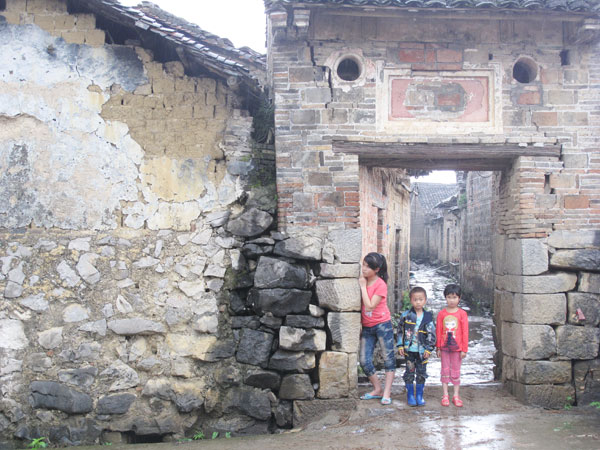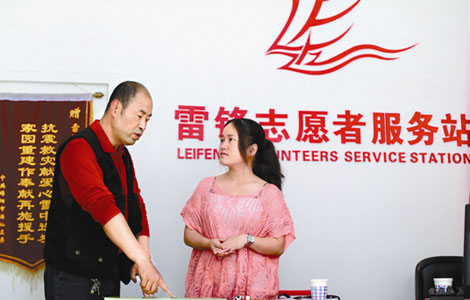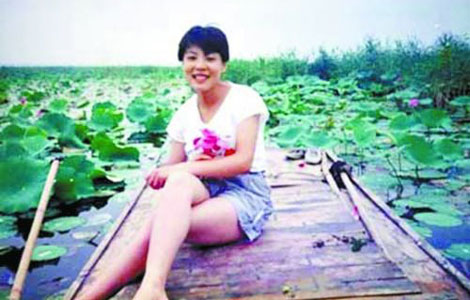Village that time forgot
Updated: 2013-05-16 02:35
By Li Yang (China Daily)
|
|||||||||||
Pancun village has been left unspoiled by modern life, giving visitors a rare glimpse into life as it was lived in a different time. Li Yang reports in Liucheng, Guangxi Zhuang autonomous region.
 |
|
The main residents in Pancun village are children and the elderly, while the young and middle-aged work in cities. Photo by Li Yang / China Daily |
Pancun village is so well-preserved that visitors can easily lose themselves in the rich history of the site. Time is frozen here. Political slogans from the "cultural revolution" (1966-76) painted on the walls some 40 years ago are still clearly visible. The wet, slippery, labyrinth-like lanes, moss-covered stone walls and timeworn wooden sculptures make it distinct from other old villages in China. The deathly stillness, tightly shut, shabby wooden doors and empty lanes reinforce the feeling that I am not welcome in such a special old place.
I visited the village of the Mulam people, an ethnic group in Liucheng of the Guangxi Zhuang autonomous region, on a rainy afternoon in May.
The only sign of life was the rainwater dripping down from the black earthen tiles and the water flowing along the open gutters on both sides of the lanes, built in the late Song Dynasty (960-1279).
Occasionally, piles of fresh cow dung in the middle of the narrow lanes reminded me that buffaloes still roam this seemingly deserted village.
The village has 120 families, making up some 700 residents. About 150 old villagers and 50 children live in the village now. The other young and middle-aged villagers work in Guangdong province and only return for important festivals.
According to Pan Liuquan, the village's Party chief, the villagers have maintained their way of life for hundreds of years. They have a self-sufficient existence - planting grain, pickling food and weaving and dying their own clothes.
Pan led me into an ancestral temple in the center of the village. It is a three-story gray-brick building that dwarfs the other houses. It boasts a large central yard for important clan gatherings. In the main hall stone tablets are inscribed with characters recording how the village was formed.
Related Stories
Eco-villages in Zhangjiagang pass acceptance test 2013-05-13 17:13
Lasting legacy as villagers rejoin the world 2013-05-10 08:52
Zhaji ancient village, a lifelike ink painting in China's Anhui 2013-05-09 15:05
Likeng, village as cultural heritage 2013-04-11 14:13
Flamboyant villagers honor sea goddess 2013-03-11 13:39
Today's Top News
English TCM help line launched in Beijing
China's dairy industry improving
Deep-sea vessel to have 5-year trial period
Final test begins on lunar explorer
Philippines to convey apology to Taiwan
Foreigners see prospects in solar energy market
Cross-border shopping exodus expected
Manila to apologize for fisherman's death
Hot Topics
Lunar probe , China growth forecasts, Emission rules get tougher, China seen through 'colored lens', International board,
Editor's Picks

|

|

|

|

|

|





